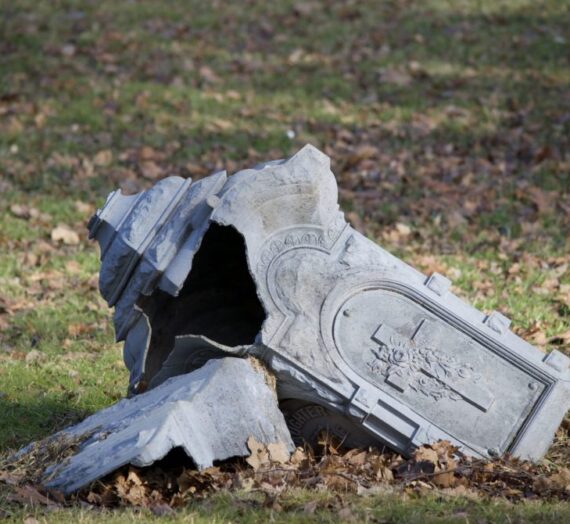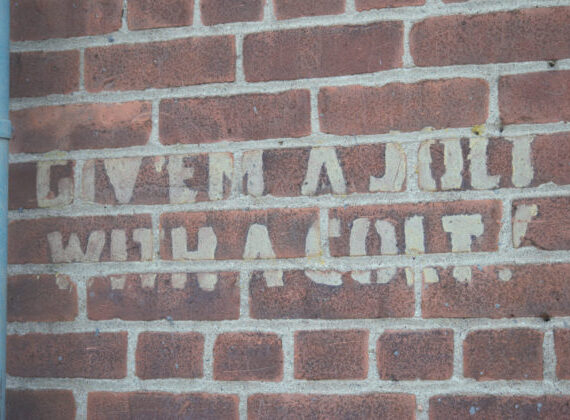
The roadside memorials and prayer vigils serve a purpose no doubt, but neither gets at the root of violence.
This morning, the faith-based PICO National Network’s Lifelines to Healing Campaign brought a more radical message to Hartford.
“If a black kid on this side of Hartford got shot,” Teny Gross suggested, treat the situation the same as if “the president of Trinity [College] got shot.”
What Gross, the Executive Director of Providence’s Institute for the Study & Practice of Nonviolence, was saying is simple: treat every life like it has the same value.
But the statistics rattled off over several hours in the Union Baptist Church on Main Street, those numbers dissolved any question of if people are, indeed, being treated as equals.

The Lifelines to Healing campaign’s two main concerns: prevention of violence and putting an end to mass incarceration.
The Northeastern bus tour began yesterday in Boston. After stopping in Hartford, it continued to Newtown, Connecticut, and then moves on to New York. In the days that follow, it will stop in Philadelphia, Camden, Baltimore, and finish in Washington DC. This is part of a national campaign taking place in the week before the 50th anniversary of Rev. Dr. Martin Luther King, Jr.’s “I Have a Dream” speech. There are also trains taking people from California and the Southeastern part of the country. Cities in the Midwest are hosting events.

Violence Prevention
The urban violence narrative always seems to circle back to a call for more police and harsher sentencing. The Lifelines to Healing campaign broke rank.
Teny Gross said “violence is like cancer. It’s curable.”

Putting “good news” and “violence” in the same sentence, Gross added that “violence is relational,” meaning that because such a small percentage of it is random, there are ways to intervene. With “70-75% of violent incidents created by 0.3% of youth,” Gross said, much can be accomplished by working with only a small percent of the population.
He said that different tactics are needed for different people, many of whom are juveniles and adults in the Training School or Prison.
Gross spoke about one individual he worked with who seemed to be settled into the wrong path. Eventually, the young man decided to remove himself from the life of violence. He said that what made him stop was the feeling of guilt he had for disappointing those, like Gross, who kept providing him with opportunities for a better life.
What this organization does in Rhode Island is a kind of direct action.
Sal Monteiro, who also works with the Institute for the Study & Practice of Nonviolence, told his own story of making a commitment to nonviolence while serving thirteen years in the Adult Correctional Institutions of Cranston, Rhode Island. When everyone expected him to participate in a fight to retaliate for his jaw being dislocated, Monteiro told the other inmate he was not going to fight.
Monteiro said that kids need to know that “it’s okay to walk away. You’re not soft. You’re not a punk.”
By refusing to fight, Monteiro said he was better respected than when he did brawl.
 Rev. Alvin Herring of Silver Spring, Maryland — Director of Training at PICO — said that “violence has its roots in failed social policies.”
Rev. Alvin Herring of Silver Spring, Maryland — Director of Training at PICO — said that “violence has its roots in failed social policies.”
Making the connection between poverty and violence, he said that health care and education disparities, combined with the absence of fathers and proliferation of “cheap guns” all contribute to the culture of violence.
Rev. Henry Brown of Mothers United Against Violence, chimed in that youth especially are dealing with ongoing and often untreated trauma of walking past blood on the sidewalk, yellow police tape, and worse. It would be inaccurate to call this PTSD, as these youth typically walk by crime scenes to and from school repeatedly.
Pastor Kenric Prescott of Union Baptist Church asked why anyone, “at the height of his life,” should have to worry about losing it on a street corner or anywhere else.
A former teacher at the Milner Core Knowledge School (now called Jumoke Academy at Milner School) has vouched for the impact of violence on students, naming this type of distraction– to put it mildly — as one of the reasons why children in certain areas perform significantly below their peers elsewhere.
Struggling in school can mean making choices that lead to dropping out. That lack of high school diploma reduces one’s options in an economy where jobs are already scarce across the board.
Rev. Alvin Herring called for those listening to show love to the young people. Gross added that the adults need to pay attention to what is going on.
These steps, along with the work by organizations like the Institute for the Study & Practice of Nonviolence, projects like Boston Operation Ceasefire, actions like the Lifelines to Healing campaign, and development of reentry programs, were some of the suggestions given for cutting back the violence.
“We can cut homicides in cities by 50%” Gross said. “There’s no reason the U.S. should only be exceptional in two things . . . homicides and suicides.”
Mass Incarceration
It may remain counterintuitive to some that violence prevention could be linked to reducing the mass incarceration trend in the United States, which Rev. Herring called “a prison country.”
But when a parent does time in prison, there is a significant likelihood that his children will also have involvement with the system.
At the same time, those convicted of certain crimes have a permanent mark — a scar — that haunts them when applying for work.
Teny Gross said that from the age of “17-24 the frontal lobe is not completely formed yet.” When youth should be transitioning into adulthood and careers, they can find themselves stuck if they have a record.
“Don’t just invest in police and jails,” Gross said.
But the status quo is mass incarceration, and this has received some media attention in the past few years.
At the clergy breakfast, not one activist seemed surprised at the assertion that the reason for why African Americans and Hispanics are imprisoned at disproportionate rates is tied to racism. One individual at the gathering said it was because African Americans continue to be treated as “commodities.”
One of the participating clergy traced the path from slavery to sharecropping to prison. This unpaid (or low paid) labor force is responsible for producing anything from clothing to farming tilapia. He listed who benefits from the prison industry: judges, police, lawyers, correctional officers, and even contract food services.
Rev. Herring said that there are now more African American incarcerated than were enslaved in the 1850s.
He showed a slide with two images: an aerial sketch of a slaveship and a photograph of the inside of a prison.

